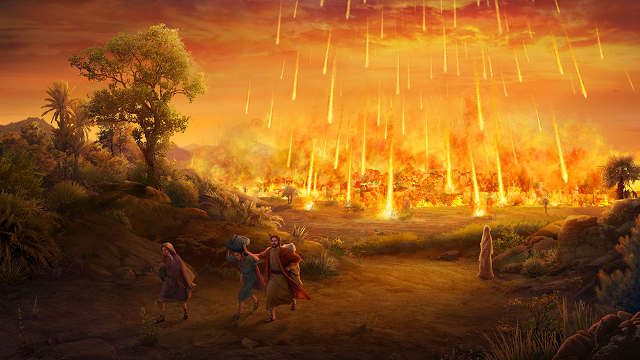
For the past decade or so, I’ve wasted numerous hours of my life engaged in ultimately futile conversations about theology on social media. It seems that I have some sort of natural talent for annoying people at both ends of the spectrum. The outspoken atheists and anti-theists on the internet don’t appreciate my confidence and use of logic, reason, and scientific evidence to support my argument in favor of a supernatural creator God.
There are also some theists who believe the Bible is literally flawless, or inerrant, and don’t like some of the articles I’ve written expressing my opinions (and research) on that subject.
The cliche says you can’t please all of the people all of the time, but sometimes it seems like I can’t please anybody, anytime. So maybe it’s a good thing that pleasing other people isn’t a very high priority for me. Frankly, I care a lot more about truth than I’m worried about whether or not you like my writing. No offense meant, but the truth matters more than your feelings. If you like my writing, great. If not, please find something else to read. Different strokes for different folks. My feelings won’t be hurt.
Quid est veritas? What is truth? To this day, that remains one of the best questions ever asked.
Theists who would argue the Bible is inerrant (mistake-free) should think about how they might respond when a knowledgeable atheist points out that Genesis 1 and Genesis 2 provide two different accounts of creation, or could argue that the story of Abraham and Isaac found in Genesis 22 indicates that at times, God appears to be cruel and capricious.
In fact, there are quite a few stories in the Bible that could be construed to show God sometimes allows evil to flourish and humans to suffer in a rather arbitrary way, and most intelligent atheists know just about all of them. Of course, those same evangelists for atheism sneering that the Bible should be catalogued as fiction, not philosophy or history in the public library, have an equally troublesome problem. Historical records external to the Bible and archeological evidence have been used to authenticate numerous biblical references.
As one example, the Western Wall of King Solomon’s temple still remains in Jerusalem, clearly proving beyond any reasonable doubt that such a temple once existed. In fact, evidence even exists which seems to prove the ancient cities of Sodom and Gomorrah were destroyed by “natural” disaster, just as Genesis 19 describes–cities that existed approximately six thousand years ago.
In 2005, astrophysicists successfully decoded a Sumerian artifact called the Planisphere, which contained very specific astronomic data. These scientists have now claimed the 5,000 year-old tablet records a contemporary asteroid strike ultimately destined for Kofels, Austria.
The ancient cities of Sodom and Gomorrah would have more than likely been in the direct path of that asteroid. Geologic evidence discovered in Kofels apparently confirms the asteroid event the Planisphere described. Bristol University Senior Lecturer in Astronautics Mark Hempsell said:
Another conclusion can be made from the trajectory. The back plume from the explosion (the mushroom cloud) would be bent over the Mediterranean Sea re-entering the atmosphere over the Levant, Sinai, and Northern Egypt. The ground heating though very short would be enough to ignite any flammable material – including human hair and clothes. It is probable more people died under the plume than in the Alps due to the impact blast.
If that wasn’t convincing enough evidence, archaeologists in Madaba, Jordan, discovered an ancient mosaic map under the floor of the church of St. George late in the 19thcentury. The church is only thirty miles from Jerusalem. The mosaic has a location on the map for the ancient city of Zoar, the city where Lot allegedly found refuge after the destruction of Sodom. The map offers some rather compelling evidence that proves one of the oldest cities mentioned in the Bible really existed, but in fairness, it doesn’t necessarily prove that Lot was a real person, even though it’s somewhat logical to assume if the rest of the story was accurate.
Furthermore, excavation of a mass gravesite at a location suspected to be one of the two decimated cities uncovered the remains of as many as twenty thousand people, all apparently killed by the same catastrophic event. Also, scientific research of ice cores conducted at the Ohio State University confirm that such a cataclysmic, worldwide event occurred about 3123 B.C. It was probably the asteroid that incinerated Sodom and Gomorrah, but not certainly.
Has the story of God’s destruction of Sodom and Gomorrah found in Genesis 19 been proved true beyond any shadow of a doubt? I don’t see how (especially if you’re an atheist or anti-theist) because the information conflicts with the natural confirmation bias.
Conversely, I don’t know how any Christian could know about the scientific evidence and not believe that Sodom and Gomorrah were literally destroyed, exactly as the Bible says. Scientific and archaeological evidence indicate that a catastrophic event fitting the basic description of the destruction of Sodom and Gomorrah literally occurred thousands of years ago, as the Bible describes.
After all, if Lot really was only a fictional character born of a writer’s imagination, all this scientific evidence of a real disaster makes for one heck of a coincidence, doesn’t it?

Speak Your Mind